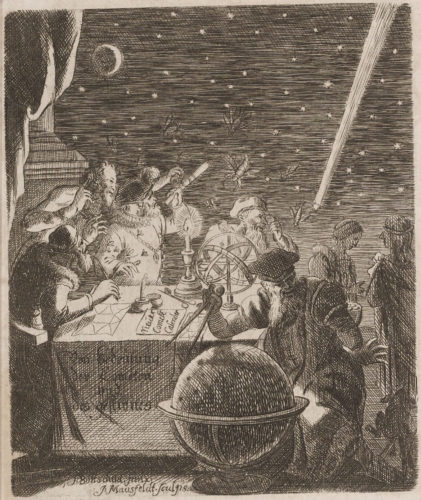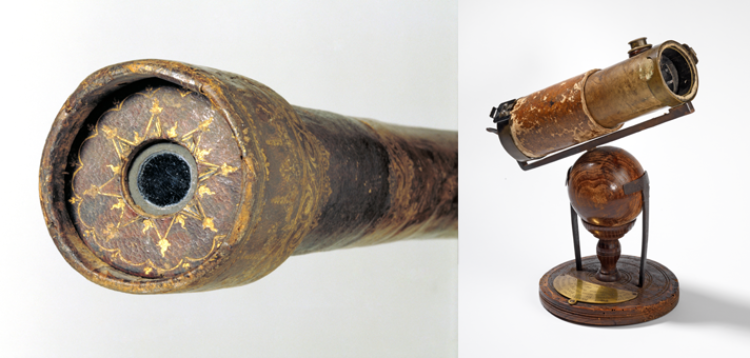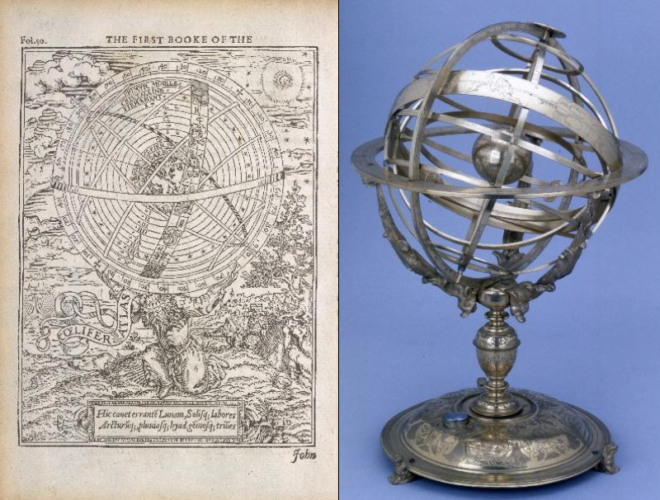As the Augsburger Wunderzeichenbuch illustrates, cosmological occurrences such as comets were often interpreted as omens, portents, and bringers of disasters such as plague and pestilence. In his treatise on comets, Pierre Petit, a French astronomer and colleague of Descartes, argued that the supposed link between comets and plagues was nonsense.
In this engraving, astronomers observe the trajectory of a comet, aided by a variety of instruments and charts. The flies and locusts buzzing around them are symbols of the pestilence superstitiously associated with comets, but the brightly-burning candle which illuminates their work represents the light of reason.













